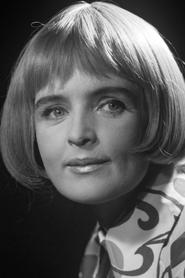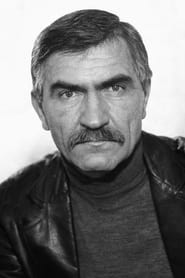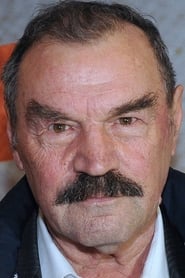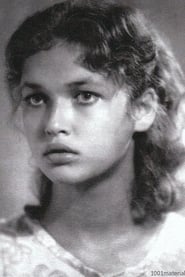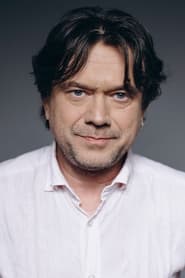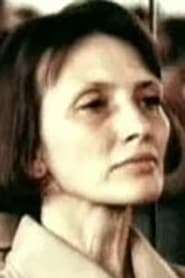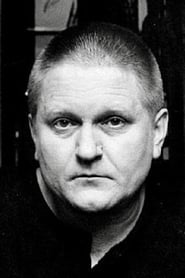
Ask Your Own Question
What is the plot?
What is the ending?
In the ending of "Iron & Blood: The Legend of Taras Bulba," Taras Bulba confronts the tragic consequences of his actions as he faces the loss of his son, Andriy, who has betrayed him for love. The film culminates in a fierce battle where Taras fights valiantly but ultimately meets his demise, leaving behind a legacy of sacrifice and the harsh realities of war.
As the final act unfolds, the scene opens with the Cossacks preparing for battle against the Polish forces. Taras Bulba, portrayed as a fierce and proud leader, rallies his men, instilling in them a sense of duty and honor. The atmosphere is charged with tension as the Cossacks, clad in traditional attire, ready their weapons, their faces reflecting determination and the weight of impending conflict.
The battle erupts with a cacophony of clashing swords and the cries of warriors. Taras fights with ferocity, embodying the spirit of the Cossacks. His movements are powerful and deliberate, showcasing his skill and experience. Amidst the chaos, he spots his son Andriy, who has joined the Polish side, torn between his loyalty to his father and his love for a Polish woman. This moment is fraught with emotional turmoil, as Taras's heart is heavy with betrayal yet filled with paternal love.
As the battle rages on, Taras confronts Andriy. The tension between father and son is palpable, a clash of ideologies and emotions. Taras, filled with rage and sorrow, implores Andriy to return to his roots, to embrace the Cossack way of life. Andriy, however, is resolute in his choice, believing in a different future. Their confrontation is intense, filled with both love and animosity, as they struggle to reconcile their conflicting loyalties.
In a tragic turn of events, Taras is forced to fight Andriy. The duel is heart-wrenching, as both men are skilled fighters, and the stakes are painfully high. The emotional weight of their relationship hangs in the air, and the audience can feel the heartbreak as they clash. Ultimately, Taras, driven by a mix of duty and despair, fatally wounds Andriy. As his son falls, Taras is overcome with grief, realizing the cost of his unwavering commitment to his beliefs.
The battle continues, and Taras, now consumed by sorrow, fights with a renewed ferocity. However, the tide of war is against him. In a final stand, he faces overwhelming odds, and despite his bravery, he is ultimately killed in battle. His death is a poignant moment, symbolizing the tragic consequences of war and the sacrifices made for honor and loyalty.
As the dust settles, the film closes with a somber reflection on the legacy of Taras Bulba. His story serves as a reminder of the complexities of love, loyalty, and the harsh realities of conflict. The final scenes depict the aftermath of the battle, with the surviving Cossacks mourning their fallen leader, and the weight of loss hangs heavy in the air. The film ends on a note of reflection, leaving the audience to ponder the cost of war and the bonds of family that can be both a source of strength and a cause of tragedy.
Is there a post-credit scene?
The movie "Iron & Blood: The Legend of Taras Bulba" does not feature a post-credit scene. The film concludes its narrative without any additional scenes or content after the credits roll. The story wraps up with the resolution of Taras Bulba's journey and the fate of his sons, focusing on themes of loyalty, sacrifice, and the struggle for freedom. The ending leaves a lasting emotional impact, emphasizing the legacy of the Cossacks and their fight against oppression.
What motivates Taras Bulba to lead his Cossack warriors into battle?
Taras Bulba is driven by a deep sense of loyalty to his people and a fierce desire to protect their way of life. His motivations are rooted in a combination of personal honor, the need to defend against external threats, and a desire to instill a sense of bravery and strength in his sons.
How does the relationship between Taras Bulba and his sons evolve throughout the film?
Initially, Taras Bulba is proud of his sons, especially the elder son, Ostap, who embodies the Cossack spirit. However, as the story progresses, the relationship becomes strained, particularly with the younger son, Andriy, who falls in love with a Polish woman. This love creates a rift between Andriy and Taras, leading to intense emotional conflict as Taras struggles between familial loyalty and his duty to the Cossack cause.
What role does the Polish antagonist play in the story?
The Polish antagonist represents the oppressive forces against which the Cossacks are fighting. He embodies the threat to their freedom and way of life, and his actions serve to heighten the stakes of the conflict. His interactions with Taras Bulba and his sons illustrate the broader struggle between the Cossacks and the Polish nobility, adding depth to the narrative.
How does Andriy's love for the Polish woman affect his loyalty to his father and the Cossack cause?
Andriy's love for the Polish woman creates a profound internal conflict for him. He is torn between his feelings for her and his loyalty to his father, Taras Bulba, and the Cossack community. This love ultimately leads him to make choices that alienate him from his father and his people, showcasing the struggle between personal desire and familial duty.
What are the consequences of Ostap's actions during the battle scenes?
Ostap's actions during the battle scenes are marked by bravery and a desire to prove himself as a warrior. However, his decisions also lead to dire consequences, including his capture by the enemy. This not only affects his fate but also serves as a catalyst for Taras Bulba's subsequent actions, driving home the themes of sacrifice and the harsh realities of war.
Is this family friendly?
"Iron & Blood: The Legend of Taras Bulba" contains several elements that may not be suitable for children or sensitive viewers. Here are some potentially objectionable aspects:
-
Violence and Battle Scenes: The film features intense battle sequences, including sword fights and large-scale conflicts that depict bloodshed and death. The violence is graphic and may be distressing for younger audiences.
-
Death and Loss: Characters experience significant loss, including the deaths of loved ones. These moments are emotionally charged and may evoke strong feelings of sadness or grief.
-
Themes of Betrayal and Revenge: The narrative explores dark themes such as betrayal, revenge, and the moral complexities of war, which may be difficult for younger viewers to fully understand or process.
-
Cultural Conflict: The film portrays the historical conflict between different cultures, which may include depictions of hostility and aggression that could be upsetting.
-
Emotional Turmoil: Characters undergo significant emotional struggles, including feelings of anger, despair, and conflict, which may resonate deeply and be unsettling for some viewers.
Overall, while the film is a historical epic with rich storytelling, its mature themes and graphic content may not be appropriate for all audiences, particularly children.










